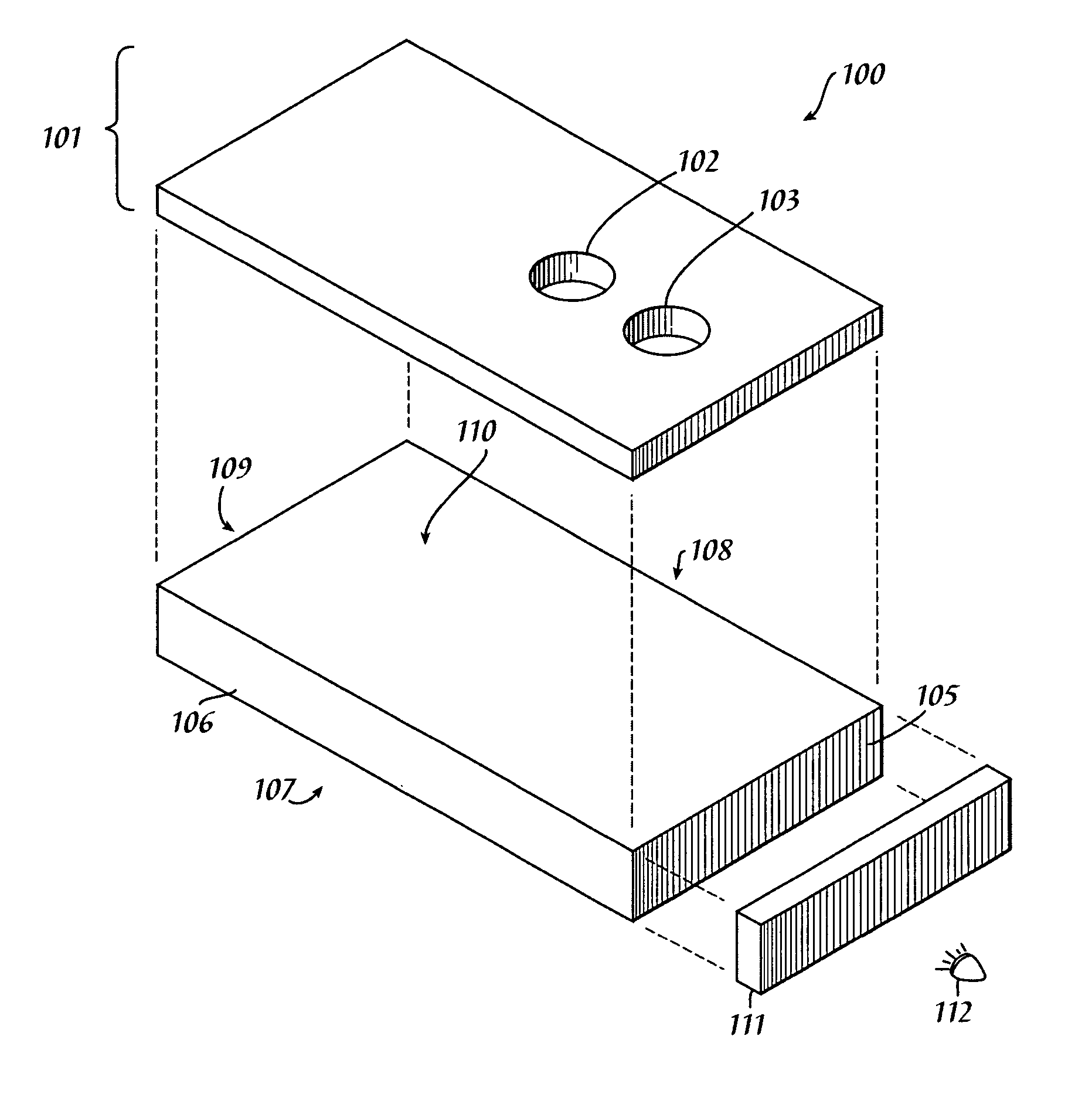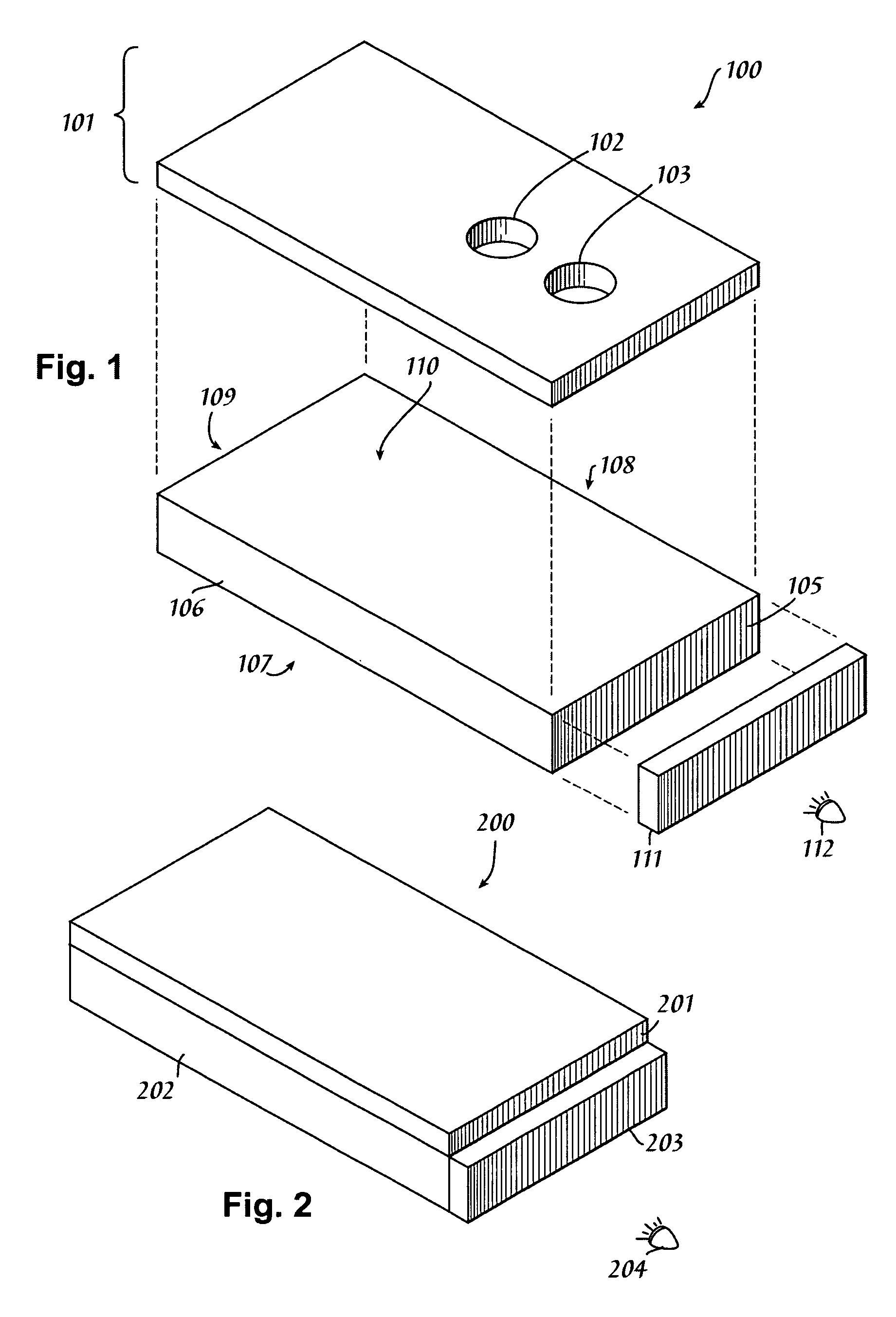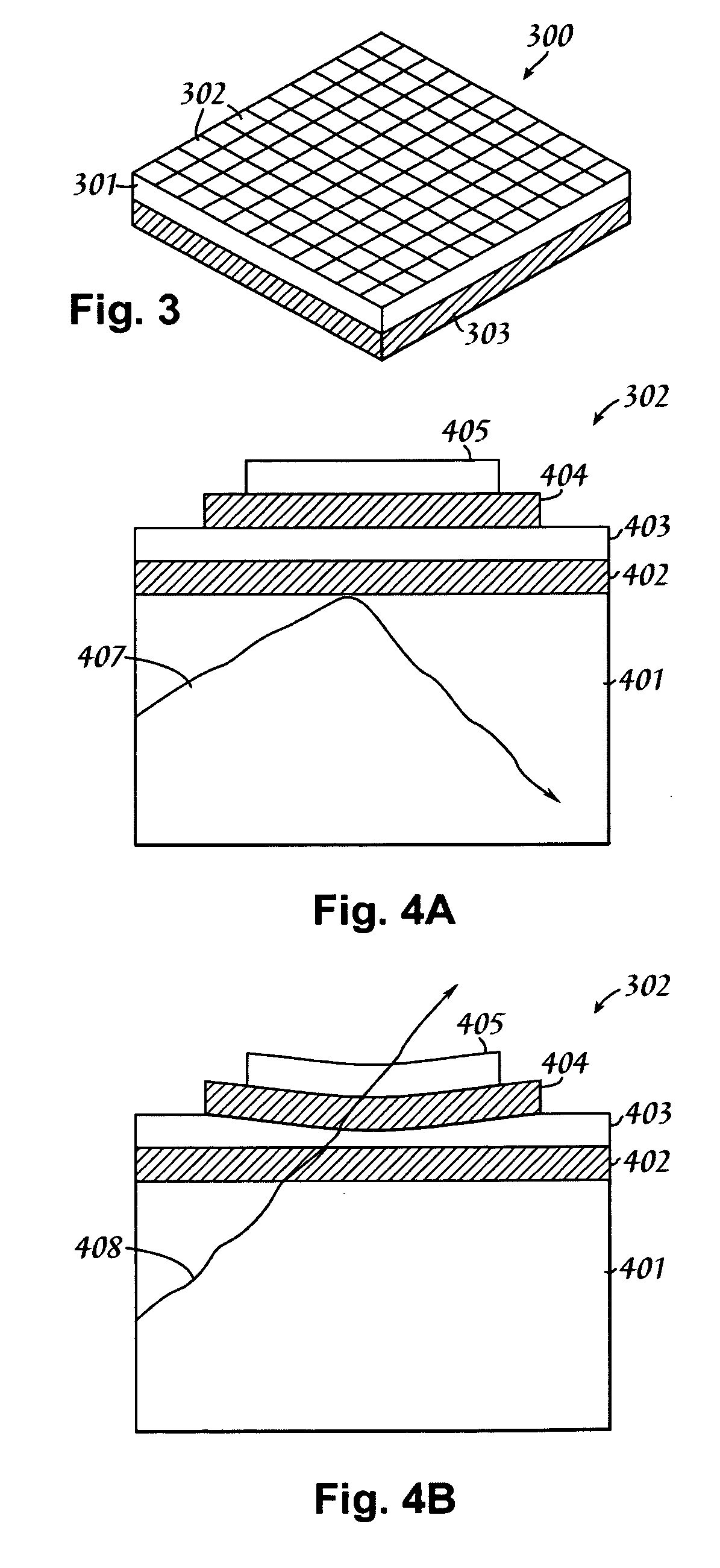Reducing light leakage and improving contrast ratio performance in FTIR display devices
a technology of contrast ratio and display device, which is applied in the field of flat panel displays, can solve the problems of system noise that compromises the signal quality, harms the display's quality, and noise, and achieves the effect of maximizing system noise reduction, reducing or eliminating the noise generated at the interface of the planar waveguide with any superadditional cladding layer, and tolerant of geometry errors
- Summary
- Abstract
- Description
- Claims
- Application Information
AI Technical Summary
Benefits of technology
Problems solved by technology
Method used
Image
Examples
Embodiment Construction
[0018] In the following description, numerous specific details are set forth to provide a thorough understanding of the present invention. However, it will be apparent to those skilled in the art that the present invention may be practiced without such specific details. In other instances, components have been shown in generalized form in order not to obscure the present invention in unnecessary detail. For the most part, details considering considerations of controlled selective dynamic frustration of total internal reflection (i.e., actual pixel operation) and the like have been omitted inasmuch as such details are not necessary to obtain a complete understanding of the present invention and, while within the skills of persons of ordinary skill in the relevant art, are not directly relevant to the utility and value provided by the present invention.
[0019] The principles of operation to be disclosed immediately below assume the presence of at least one of the two deleterious noise...
PUM
 Login to View More
Login to View More Abstract
Description
Claims
Application Information
 Login to View More
Login to View More - R&D
- Intellectual Property
- Life Sciences
- Materials
- Tech Scout
- Unparalleled Data Quality
- Higher Quality Content
- 60% Fewer Hallucinations
Browse by: Latest US Patents, China's latest patents, Technical Efficacy Thesaurus, Application Domain, Technology Topic, Popular Technical Reports.
© 2025 PatSnap. All rights reserved.Legal|Privacy policy|Modern Slavery Act Transparency Statement|Sitemap|About US| Contact US: help@patsnap.com



